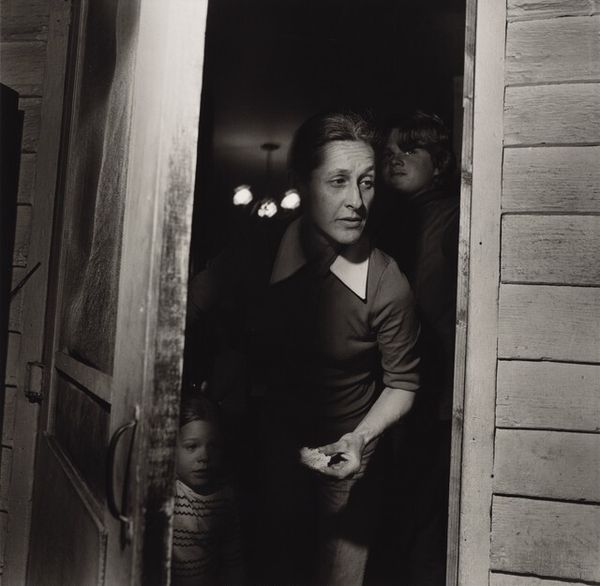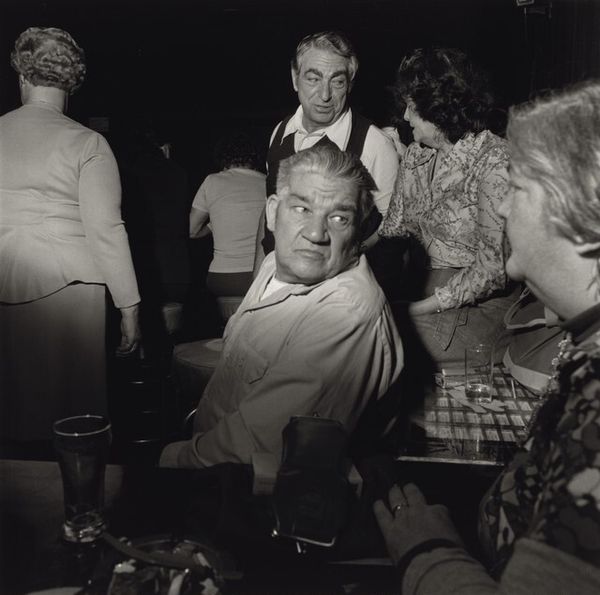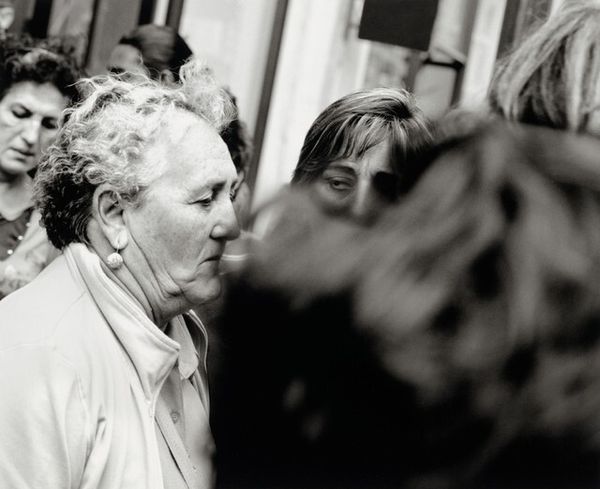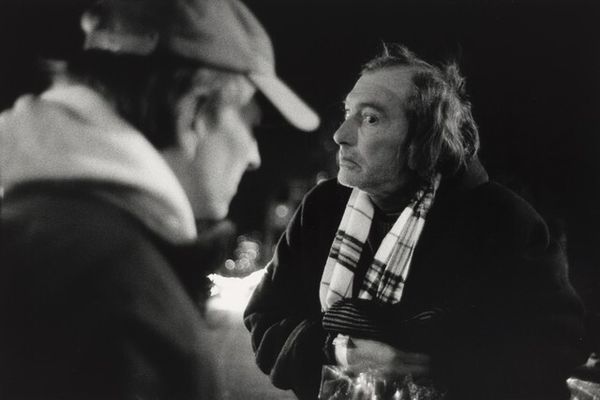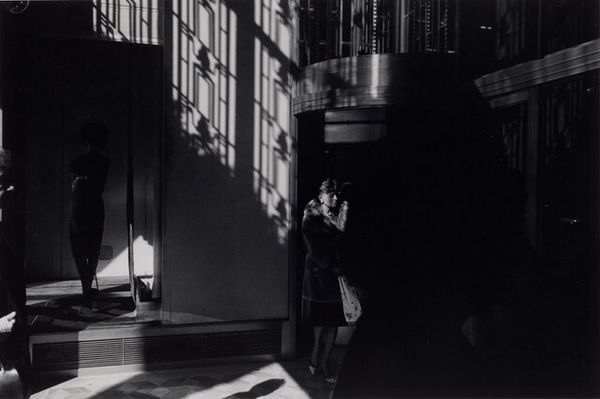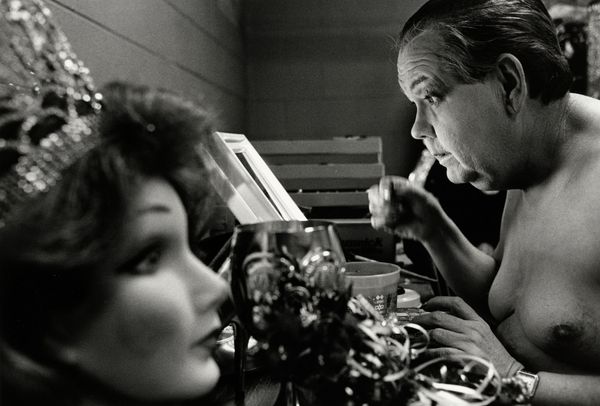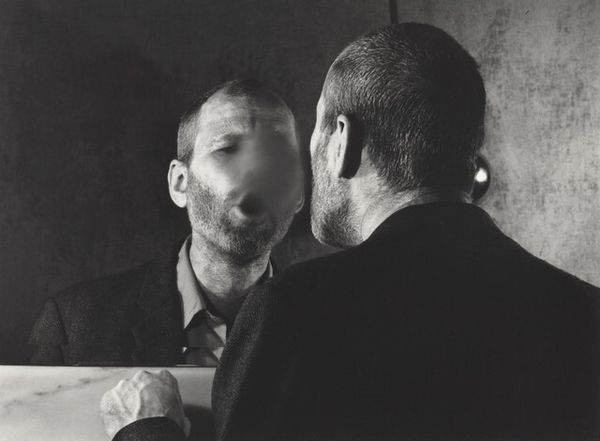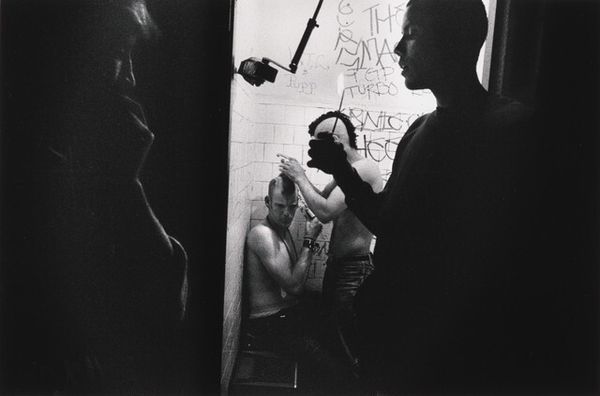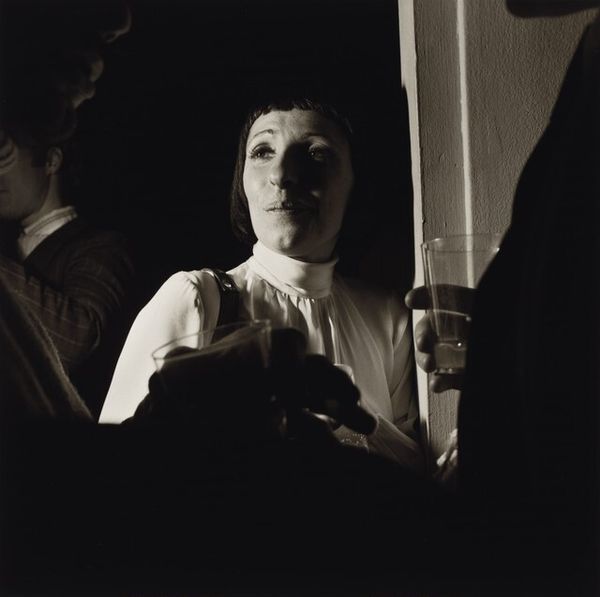
photography, gelatin-silver-print
#
portrait
#
black and white photography
#
photography
#
black and white
#
gelatin-silver-print
#
monochrome photography
#
monochrome
#
modernism
#
monochrome
Dimensions: sheet: 33.5 × 40.5 cm (13 3/16 × 15 15/16 in.) image: 26.5 × 34.1 cm (10 7/16 × 13 7/16 in.)
Copyright: National Gallery of Art: CC0 1.0
Editor: This is Gordon Parks' photograph of Giorgio De Chirico, taken sometime after 1949. It's a gelatin-silver print. It has a strong, almost stark, quality to it, focusing intensely on De Chirico's face amidst his art and a second, blurred figure. What strikes you when you look at this, especially regarding how it was made and the cultural context? Curator: For me, it’s about deconstructing the romanticized notion of the artist. Parks, through the photographic medium itself—the silver gelatin print, a mass-producible material—is engaging in a dialogue about accessibility and the de-mystification of artistic genius. Editor: De-mystification? How so? Curator: Well, look at the setting. De Chirico isn't presented in some isolated studio, divinely inspired. Instead, he is part of a scene. How does the placement of the female figure complicate a potential solitary reading of artistic expression, perhaps gesturing to labor and collaborative networks behind art production? Editor: I see what you mean! So, it’s less about singular inspiration and more about recognizing all the processes and materials, and the often unseen labor, that bring an artwork to life. The photograph as an artifact becomes central. Curator: Precisely. We are pushed to examine the economic and social conditions surrounding its production and distribution. It isn't just a portrait; it's a material object embedded in a complex system. Editor: That makes me consider the role of Parks as a photographer, how he is not only documenting, but actively shaping our understanding through this medium. Thank you. Curator: It's through understanding those very material conditions of art that we can have richer, more nuanced appreciation for both Parks’ photograph and De Chirico's legacy.
Comments
No comments
Be the first to comment and join the conversation on the ultimate creative platform.

